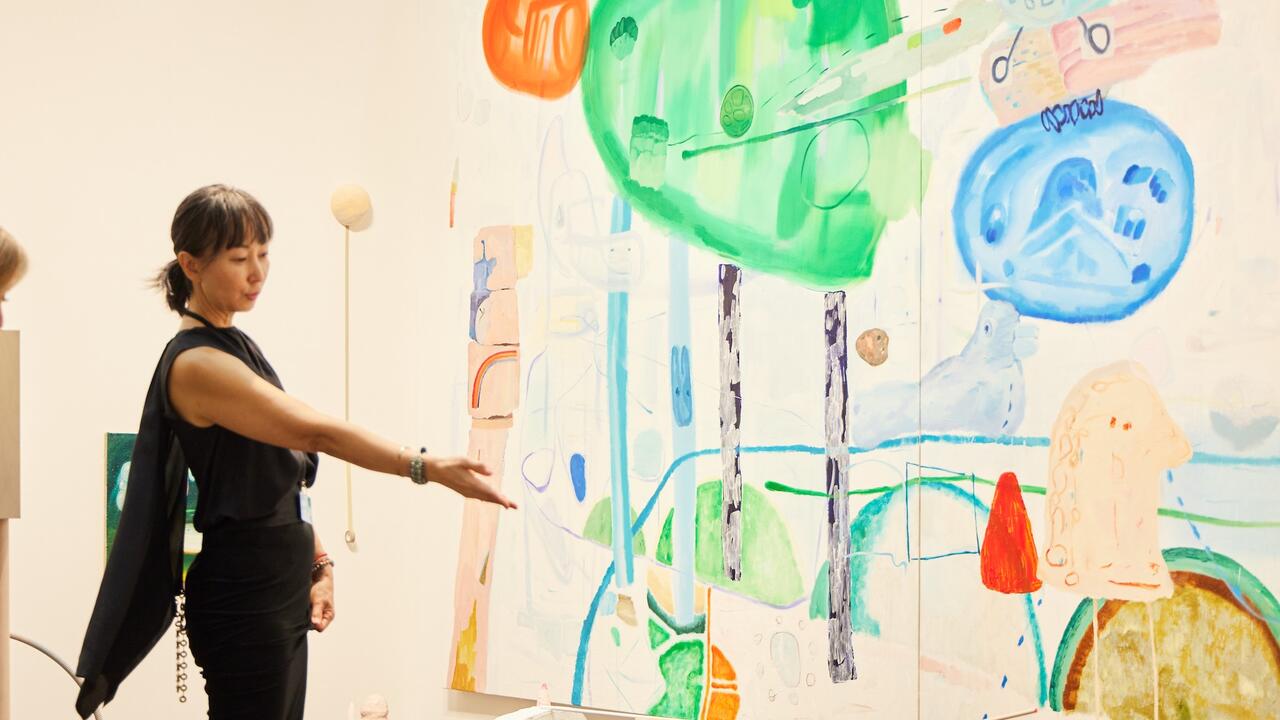'I see a Darkness...'
As befits its adoration of all things undead, the Gothic Revival is now well into its fourth century and still going strong. From TV shows such as Six Feet Under to Matthew Barney's Cremaster 3 (2002), which featured a horse race with flayed, zombie thoroughbreds, both high art and popular culture are currently infused with the heady fumes of the crypt. What is this persistent appeal, one wonders? An intellectual assertion of our irrational nature, Goth offers all the comforts of madness and a paradoxical empowerment born of our continual abject degradation. Goth embraces life by celebrating death. 'Woman', wrote Samuel Beckett, 'gives birth astride the grave.' Passing our days in ignorance, doubt and fear, we struggle to satisfy our meagre desires. Goth gives us permission to be selfish. Accepting the fundamental cruelty and injustice of all things human, it is the ultimate philosophy of the individual; a backwards-looking, anti-social affirmation of the self.
Born in the wake of Punk, current strains of Goth are a reaction against that movement's leftist social agenda. Goth rejects anarchy in favour of an oppressive social order that allows a few the freedom to indulge in pleasures at the expense of the many. Gilles de Rais, Des Esseintes, Miles Davis: the best Goths are all royalty, ensconced in their castles, immune from prosecution. In contemporary art the fundamental nature of Goth is often overlooked or misunderstood. Too many young artists today simply regurgitate a slew of diluted Pop-Goth signifiers, filling graduate studios with a plethora of skulls and spider's webs, vampires and fake blood, zombie heads, eyeball sculptures and ninth-generation variations of old Bauhaus videos. Thus defanged, Goth has never been so tiresome.
Which brings us to 'I See a Darkness ...', the latest in a string of Goth group shows replete with the requisite emphasis on death and a barrage of monsters, evil eyes, twisted trees and crumbling stairways. The show's title comes from the album of the same name by Will Oldham, a.k.a. Bonnie Prince Billy. Setting the tone, Adam McEwen's painting Untitled (Dead) (2002) is a silver monochrome canvas about the size and shape of a refrigerator door in a morgue, with the title painted in the style of a shop sign at its centre. Less macabre than funny, the work is a sly comment on the oft-bemoaned 'death of painting' and its continual resurrection. Equally ironic, Nigel Cooke's Cryptosunset (2002-3) is a dark little landscape with a tiny, glowing eye piercing a leaden sky. Part Salvator Rosa, part stoner-doodle, the painting is Goth with a nudge and a wink. Steven Shearer's digital collage of hundreds of images (taken from the Internet) of guys with their guitars underscores the connection between Goth and music with a nod to Heavy Metal but does little else. Better at acknowledging Goth's antagonistic attitude towards Punk is McEwen's enlarged obituary of still very much alive former Sex Pistols manager Malcolm McLaren.
Slater Bradley manages to reflect on our culture's saccharine fascination with death and its fixation on youth in one video which follows a young girl as she takes flowers to a makeshift memorial for John F. Kennedy Jr. Scrutinizing the girl, who seems unaware she is being filmed, the camera eye takes on a life of its own, creepily probing her body with extreme close-ups of her face, shoulders and neck in a way that recalls Michael Powell's film Peeping Tom (1960). In a similar manner Aida Ruilova's series of very short videos all feature camerawork that emphasizes a disoriented subjectivity. Populated by a host of spasmodic, drooling, muttering young people crawling through derelict interiors, the video's rapid editing,
distorted close-ups, Dutch angles and repetition of shots and sound bites effectively, if somewhat self-consciously, create a horror film's sense of dread and hint at a Nietzschean hell of eternal recurrence.
Entertaining and engaging, all of the work in 'I See a Darkness ...' felt pretty light. Which is fine. There's always room for a playful attitude towards death, and Goth always has been a bit hokey. Yet, given the state of the world today, isn't there a more pressing need for work of a different calibre, for serious work that has the power to truly disturb?
Insisting that despite progress human nature has not changed, Goth attempts to come to grips with the darker reality of our condition. In the past artists and writers were the necessary voices urgently articulating these truths and struggling to understand them. With this in mind, is it too much to ask where are the de Sades and Goyas, the Poes and Artauds, of today?















